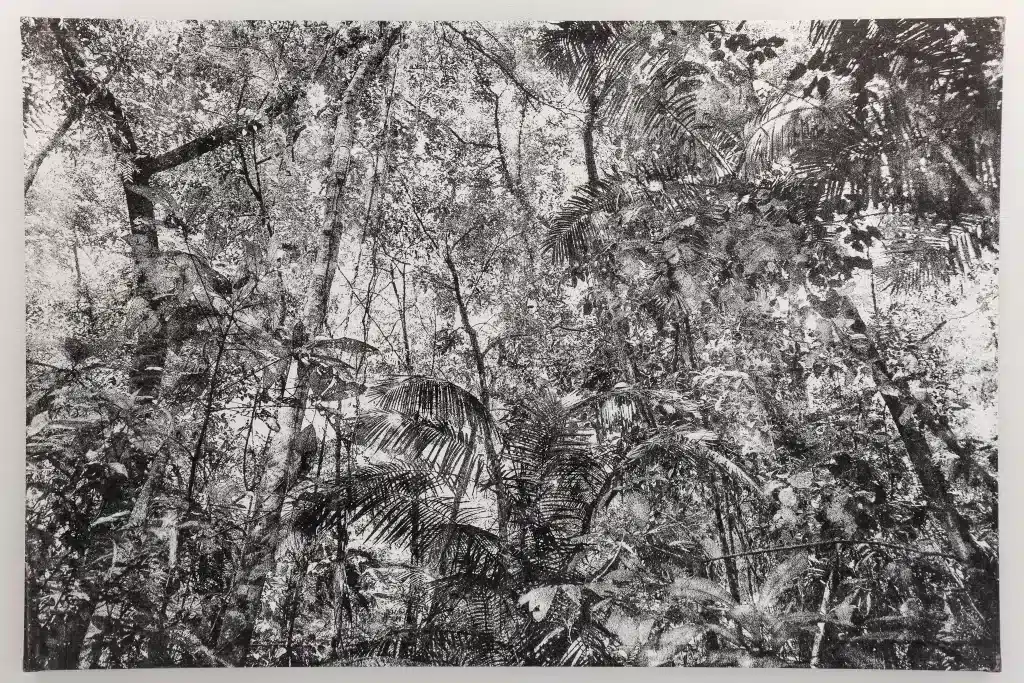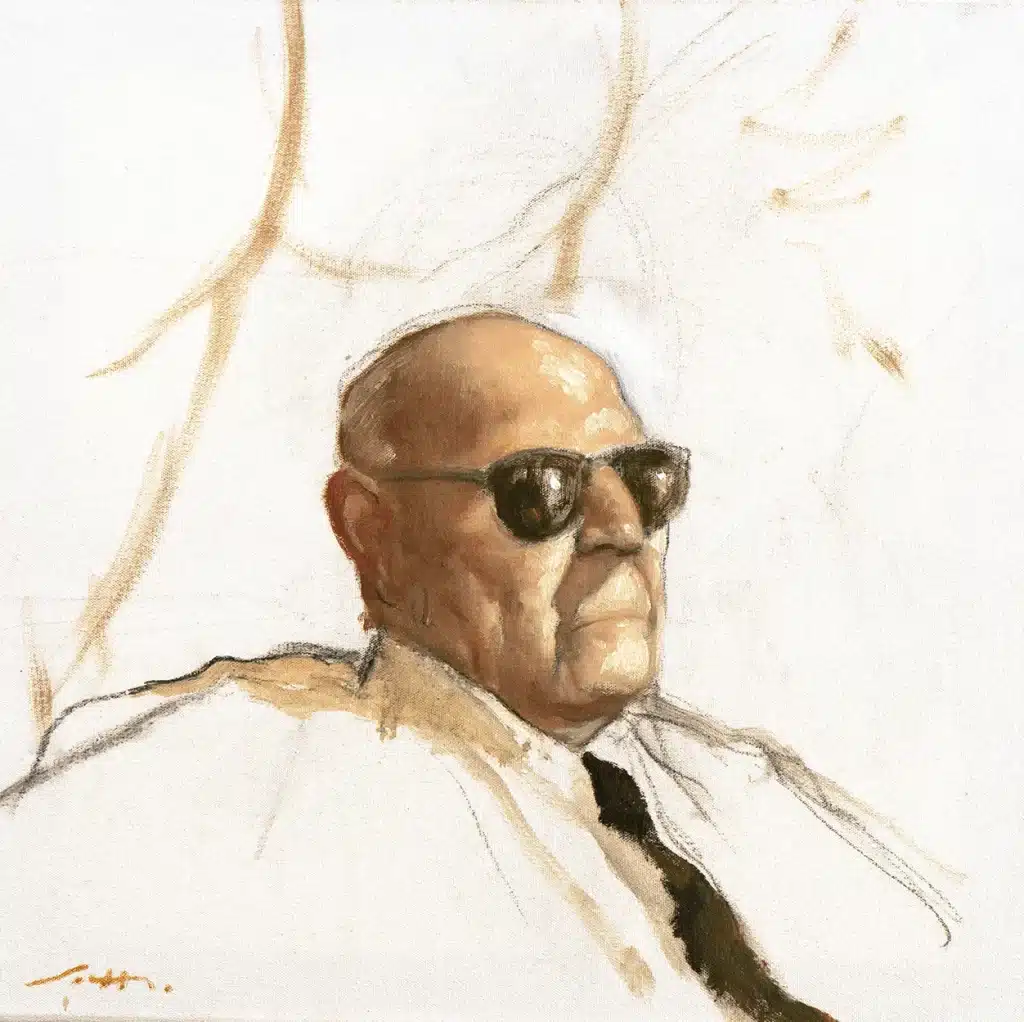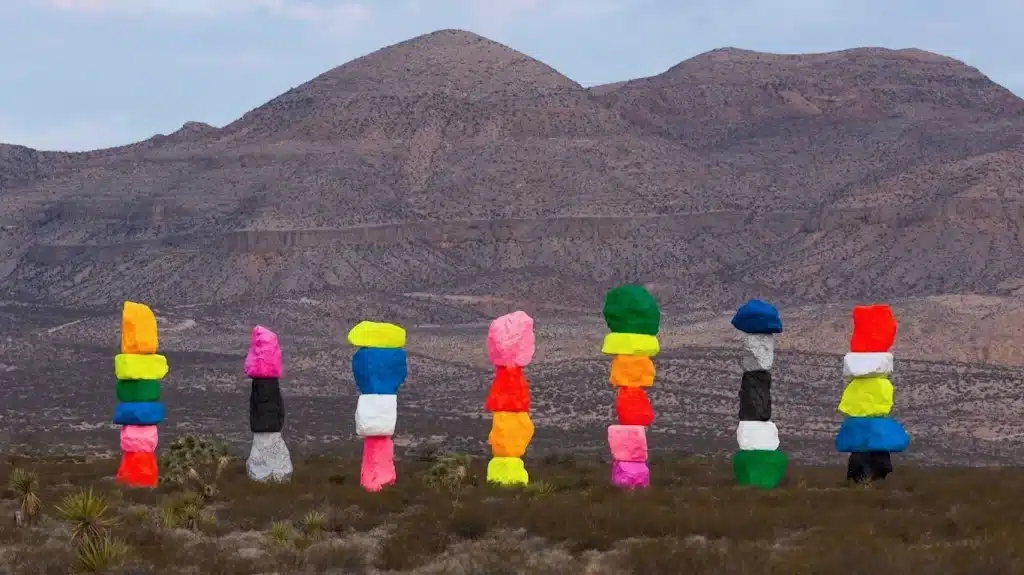Inflammable alludes directly and repeatedly to the notion of landscape as a symbolic element. Although Tomás Ochoa (Ecuador, 1965) is not only a landscape artist, on the contrary, he is a multimedial and polythematic artist, he has found in the representation of the landscape a tool that has been useful not only to show the incidence of violence on the territories and their inhabitants, but also to raise questions about terms such as community, identity, violence and resistance to oblivion. The landscape and the spatial conception it alludes to Inflamable, is the one on which meanings and new values are built that show the way in which, as a collective, we deploy our gaze and presence on the spaces, to which we simultaneously imbricate cultural codes that account for our forms of existence.
This is precisely how Ochoa’s landscape gaze is configured; in Inflamable, the landscape, but more than anything else the configuration of space, is a symbolic, poetic and political proclamation; a representation that seeks to debate the discourses of identity and history, but also their forms of representation. Ochoa constructs space no longer as a mere jungle or architectural fragment, or as a geographical territory, but as a pictorial space that links both the natural setting (geosystem) and the social (territory), thus leading to a configuration of cultural landscape (symbolic space), which is enhanced by the very materiality and technique of his pieces. The landscapes that Ochoa captures through gunpowder and deflagration, not only denounce the rawness of violence, but also put before our eyes the constant of the territories in perpetual dispute, scenarios that thanks to their rustic simplicity, beauty and exuberance are framed in the debatable Paradox of Bonanza.
While most of the pieces included in Inflamable are framed in the landscape movement that Eduardo Serrano would call “the first artistic genre of Colombia”, these have been executed with a full contemporary awareness, in which, on the one hand, the artist knows he is the bearer of a long-standing artistic tradition, but on the other hand, he is constantly oriented towards renewal. This gives light on why Ochoa makes use of gunpowder and fire as primary elements of his production, and why, more than painting or
photography, his work is action, process, movement. His hybrid paintings are not conventional, in them, as he indicates, the photographic grains are replaced by grains of gunpowder that, once deflagrated, reveal a non-image, a performative image. This action not only recognizes in gunpowder an element with a strong symbolic and historical charge, but also presents fire as a transforming agent and cathartic bridge, as an element that not only reveals the image, but in the process destroys and renews it, placing it in a much more powerful discursive and conceptual plane.
In his thematic and formal decisions Ochoa not only presents us with violence, but juxtaposes it with the ancestral and the sacred, with that sense of metaphysical belonging that motivated, among many other initiatives, the triggering event of the Línea Negra series: The delimitation more than two decades ago of the Arhuaco ancestral territories by their mamos, despite the risk of the presence of illegal armed groups in the area. Ochoa’s work is clearly evocative, through the vestige he unveils the indexical force of his work, his works beyond being constituted from the image, are erected from its trace, from the footprint left by the passage of violence and fire itself, and this is more than enough to unveil bloody realities, which however, are permeated by the resistance and dignity of those who suffer them.
The installation Terra Alienus (Foreign Land) was born, in Ochoa’s words, from the premise that a crisis can become an opportunity. During the pandemic confinement, the artist began an investigation that seeks, through the use of ancestral inputs from the Andes and vernacular bio-architectural knowledge and practices, “to demonstrate that with apparently humble and precarious materials, one can aspire to the attribute of complexity.1“(Ochoa, 2022); and indeed it succeeds.
For this purpose, Terra Alienus turns to bahareque as a mode of manifestation; using materials such as earth, vegetable fibers and guadua, obtained from areas such as Risaralda, Córdoba and Antioquia, Ochoa puts on the table one of the backbone tensions of the armed confrontation in Colombia: the problem of land and the failed attempts at agrarian reform. Through fragmentary modular pieces, the artist poses the exile, uprooting and archetypal resignation of the Colombian peasant, who, as Eduardo Caballero Calderón formulated in 1954, has been perpetually condemned to be a landless serf.
The phrase Ite inflamate omniwhich gives its name to one of Tomás Ochoa’s most recent series, and which was used by Saint Ignatius of Loyola as a last instruction to send off the Jesuit missions that were leaving on their evangelizing crusade to the East and West Indies, has acquired a double connotation over the centuries. For the Christian story these words, which could be translated as “Go and set fire to everything”, are the metaphor of the faith that enkindles and enlivens the hearts of men; not in vain is St. Francis Xavier, patron saint of missionaries, represented in religious iconography as a man with his chest on fire.
However, in the American experience these flames have not been merely metaphorical, which allows us to attribute a double meaning to this phrase. That evangelizing proclamation, which presented the blazing fire as a spiritual symbol, quickly became a reality that consolidated the cultural devastation of various native communities of the continent. Under the flames of the conquest, the mnemonic systems and tools of various pre-Hispanic cultures burned, and thanks to this fiery purge, the multiple cultural imaginaries in which we are framed were established. This is precisely the approach that Ochoa proposes in this series, in which using gunpowder and the rose window, emblem of religious architecture, he manages to merge the double role of fire in the forced cultural hybridization of the American continent.
Credits to Laura Páez
Curator and Art Historian





